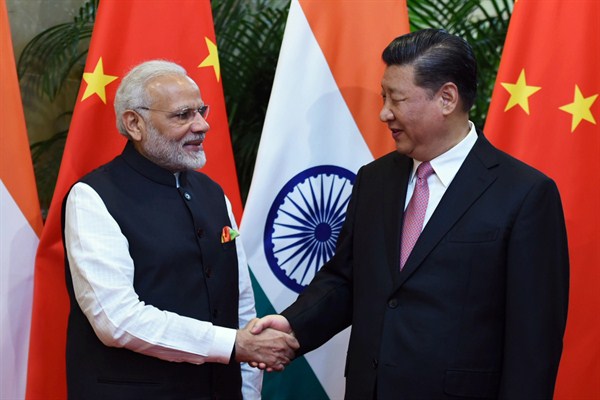The historic inter-Korean summit on April 27 drew global attention, but it overshadowed another important meeting that began the same day between two other neighbors in Asia with their own fraught history. Billed as an “informal summit” between Indian Prime Minister Narendra Modi and Chinese President Xi Jinping in Wuhan, China, it was a welcome development in their strained relationship that revealed the domestic priorities driving both countries in the short term, as well as the strategic undercurrents that are shaping the Asia-Pacific.
Modi’s visit to the central Chinese city of Wuhan was seen by some as an effort to “reset” relations between Asia’s two great powers. While the summit produced little to recalibrate the strategic fault lines between India and China, it appears to have succeeded in lowering temperatures and creating space to improve ties after a tumultuous 2017, when India and China engaged in their most fractious border confrontation in decades.
Their standoff in the remote Himalayan region of Doklam was the first time India confronted China over a border disputed by a third country, with India claiming to stand up to China on behalf of Bhutan. Both sides’ rhetoric, but especially China’s, was alarmingly hawkish, raising the stakes. Though the confrontation did not escalate and the two sides agreed to fall back, Sino-Indian relations had clearly entered a more fraught phase, with India prepared to counter China’s moves in its neighborhood and around the Indian Ocean.

